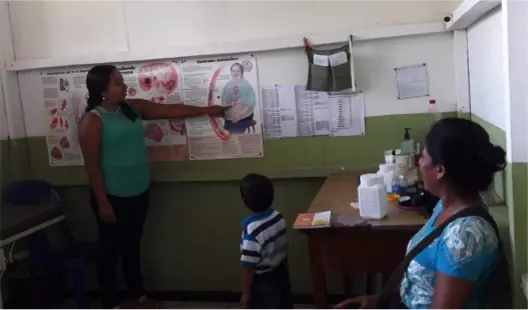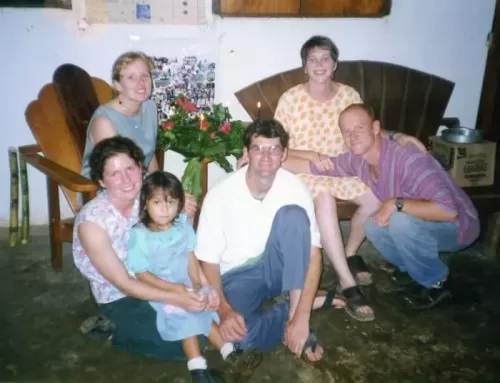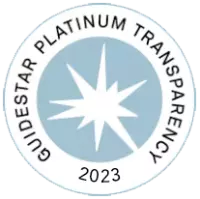The recent National Survey of Chronic Disease revealed that there are 2.5 million cases of diabetes in Guatemala. It is a growing challenge that we are seeing in every community where we work.
The average household income of a rural family here is less than 400 USD a month, while treatment for a chronic disease such as diabetes can cost an average of 100-300 USD a month. The cost would also rise significantly if there are complications related to diabetes such as cardiovascular disease, kidney, nerve, eye, foot, and skin damages. On a recent visit to the La Gloria clinic working with the health promoters there, a 47-year-old indigenous Q’eqchi woman with uncontrolled diabetes of 5+ years came in with a horribly infected diabetic foot ulcer.
The unfortunate progression of the disease leads to a very deep infected foot ulcer (13cm x 5 cm). The family waited until she got progressively worse, not because they wanted to but because they knew the cost of her treatment would be something, they couldn’t afford without drowning in more debt than they were already in.
They were hoping it would get better by itself or/and God would do his miracle on her foot. They waited until her foot began to ooze foul-smelling yellow, greenish liquid which, just by a light touch, flowed like jam on a sandwich. The affected foot was double the size of the other foot. The infection was deep tunneled to her toes and her tendons were exposed. However, she was not in pain. The nerve damage was already too advanced and she did not feel pain nor a subtle touch.
She has lost much of her sensation to her foot, the cause for her foot ulcer to begin with. She wore paper thin sandals that did not protect her foot from the usual things on the dirt floors of her house nor the street such as rocks, nails, needles, scraps of metal, and glass. With much loss of sensation to her foot, she didn’t even remember how the ulcer began. She was febrile for days, but that had gone down due to some injection that the hospital gave her.
They first took her to the public hospital, where she was referred to a private doctor. The private doctor, without examining her foot, told the family that he would charge 100 USD for every visit, in other words, for every day of wound care. From our assessment, this wound would have taken at least 2 months, or 60 days to heal. We can all do the math here. The family could not afford the treatment. The family then brought the patient to the health promoter clinic in La Gloria.
When I saw her in the clinic, the promoters had already been treating her for one week. Every day for the past 7 days, starting at 7 AM, they have been cleaning her wound for two hours a day using sterile technique. All their hard work of debriding all damaged, infected, and dead tissue, then packing the deep ulcers and covering them with wet-to-dry dressings, was working beautifully. They had already started her on antibiotics, medicines for diabetes and neuropathy, and counseling. The promoters showed me a picture of her foot the first visit with pride of their amazing work and joy for the patient’s recovery.
For all her treatment that day, which included a month of medicines for diabetes, wound cleaning, 10 days of antibiotics and consult, she paid 5 USD. This was 4 weeks ago from today and the promoters are still diligently treating her foot, and they have also incorporated the family members for wound cleaning and teaching them how to boil purified water with a pinch of salt to make saline and use gauze (cut and sterilized in the clinic) for packing. On every visit, they counsel the patient and her family on the importance of keeping her blood sugar controlled for better wound healing and to avoid complications from uncontrolled diabetes.
The passion, empathy, and accessibility of the care provided by the promoters have spread a positive reputation across Petén. In a recent patient/diagnosis count of the clinic, diabetes and cardiac diseases were now the most diagnosed, respectively. I think the change is in part related to more diabetics being diagnosed, but also very much related to the quality of care and the low cost of treatment provided by the promoters. A month treatment of Metformin can cost an average of 50 USD in the pharmacy, while we charge 1 USD. Insulin at the pharmacy can cost an average of 90 USD while we charge 9 USD. If the prices are still burdensome, we absorb the cost with our emergency fund, so there is never any hindrance to receiving treatment.
In recognizing that more diabetic care needs to be accessible, we have added two new diabetes clinic locations, La Libertad and Sayaxche, working in conjunction with the municipality to care for diabetics. The team has also expressed the necessity of preventing diabetes by proposing diabetic prevention talks to school children in the communities.





